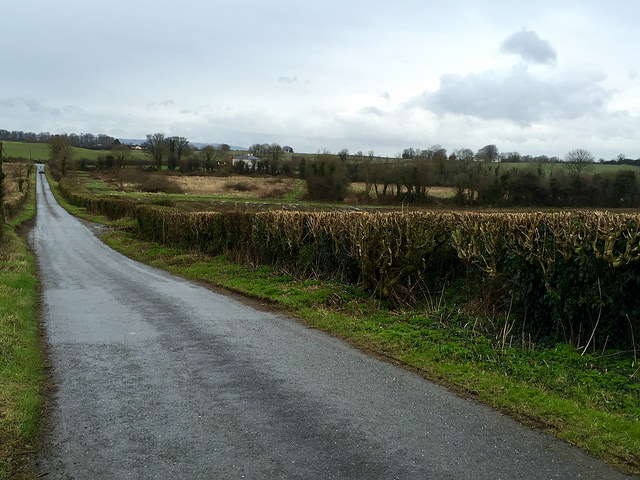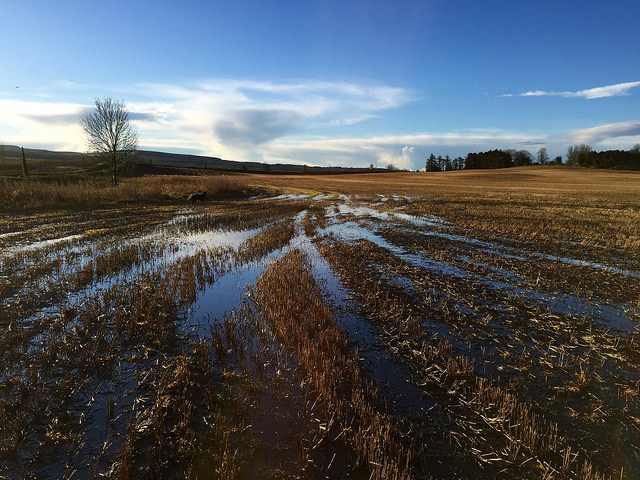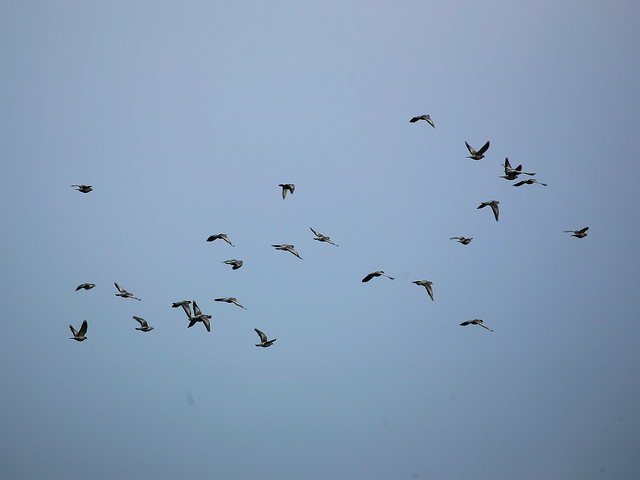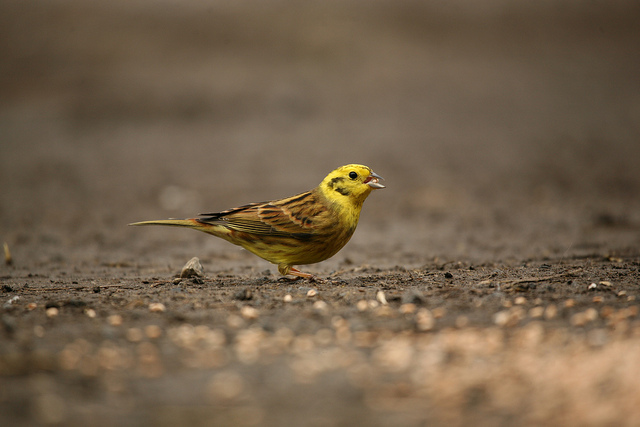For many, birdwatching is about making lists. Lists of the birds seen on a walk, lists of the birds that visit your garden, or lists of all the birds seen over one’s lifetime. This characteristic of birdwatching is taken to its logical extent with the advent of Patchwork Challenge –500 or so birdwatchers across Britain and Ireland making lists, and competing, to see who can see the most birds in their site (or patch) in a year. The rules are quite simple; your patch can’t be more than 3 km2. You make a list of all the birds seen over the year and for each common bird seen you score a single point, less common species 2 points and 3 or more points for rarities, mega rarities, etc. The patch with the most points at the end of the year wins. Simple!
But of course it is only the very special wildlife sites that can compete at this level, so the Patchwork Challenge has another dimension. It allows participants to list all the species they find in any given year, and use this as the benchmark to reach, or exceed, in subsequent years. This ‘comparative’ score allows everyone to compete on an equal basis, irrespective of the quality of their patch. It is this that makes it so appealing (or compelling) for bird watching in a local patch.

Well I thought I would join this merry band of men (for the majority are men) and give this Patchwork Challenge a go, to see what it is all about. First task was to decide on my site. As I don’t have much time for birdwatching these days, the choice was simple. My patch would have to be either around where I live, or around where I work. As the latter was already someone else’s patch, it had to be around where I live in Bramblestown, Co. Kilkenny. This is prime agricultural land – not great raw material to work with, in birdwatching terms, that is. But looking at the map, if I was clever, I could draw the boundary to include Bramblestown Bog and Gowran Park Race Course within my patch to maximise the variety of habitats. The patch I settled on has an area of 254 ha, comprised of 121 ha of grassland, 55 ha arable, 33 ha golf course, 31 ha broadleaved woodland, 8 ha commercial forestry and 6 ha of wetland. That I could find such diversity of habitat in my local patch was my first ‘patchwork’ surprise, and this augured well for my challenge.

I have now completed my first month of the Patchwork Challenge, so how have I got on? Well, first the statistics. In January I recorded 44 species and amassed 47 points; I picked up double points for long-eared owl (seen in the headlights of my car going to work), peregrine and hooded crow. The latter is a geographic anomaly of this being a British-led initiative!
And more importantly, what do I make of it all? Certainly it has given birdwatching around my home some purpose, and adds more enjoyment to walking the dogs. And although it is just a list, it has meant that I am far more observant and questioning about bird behaviour in my patch. I was intrigued that I had difficulty, for example, in seeing snipe despite there being plenty of apparently suitable habitat. I did manage to see them, but not in the area I expected. I wondered why that was the case? I know there are tree sparrow in the area so I make a point of regularly locating and scanning the resident flock of finches and buntings looking for the ‘tick’. Still no sign of the tree sparrow, so I am curious, where might they be? Or perhaps the population in Ireland is on the decline once more? [note to self- I must check the Common Birds Survey data]. And late last year I thought yellowhammer numbers were way down on previous years, but that is not the case; it is only that they have moved to a part of the patch I rarely walk through. This has made me question, what determines small scale distributional shifts like this? And showing off stock doves was a regular party piece of mine for any visiting birder, but no sign of them so far this year. Where have the blighters gone when I need them?

And, perhaps most importantly of all, I know that if I make a full list of all the species I see on my regular walks and submit this to the British Trust for Ornithology’s Bird Track system, then I know that I am helping to build up quantitative information that can be used to track bird population change across Ireland and Britain. That is a good use of my precious birdwatching time.
All in all, this has been enjoyable, and I have been surprised at how much there is to learn on one’s doorstep, on one’s patch. Oh, and the dogs are fitter!
Here is my month’s diary:
1st JANUARY: was a wet, windy day. Took dogs for walk across Tomas Brennan’s arable fields – didn’t even make it into to double figures!
List: 1. Blackbird, 2. Robin, 3. Blue Tit, 4. Great Tit, 5. Rook, 6. Woodpigeon, 7. Dunnock, 8. Skylark.
3rd JANUARY: was drier. Visited Bramblestown Bog for a while. Delighted visit brought me to 28 species, including beautiful views of a peregrine and heard jay calling -15 teal, 2 mallard. First proper day birding in my patch and was able to add 20 species.
List: 9. Kestrel, 10. Yellowhammer, 11. Pied Wagtail, 12. Chaffinch, 13. Magpie, 14. Jackdaw, 15. Mistle Thrush, 16. Starling, 17. Long-tailed Tit, 18. Hooded Crow, 19. Wren, 20. Reed Bunting, 21. Buzzard, 22. Peregrine, 23. Moorhen, 24. Jay, 25. Teal, 26. Mallard, 27. Goldcrest, 28. Grey Heron.
9th JANUARY :Cool (6 °C) and overcast. Ground still saturated. Tomas Brennan and Greg’s fields. Added only two new species, song thrush and raven. Surprised not to have seen redwing, fieldfare or snipe yet
List: 29. Song Thrush, 30. Raven.
10th JANUARY: walked the large cereal field to north of Drey’s Gate (got strange looks from neighbours when taking photograph in middle of field!) Here I located my flock of finches, buntings and thrushes. Field very wet but good numbers of birds about.
List: 31. Bullfinch, 32. Lesser Redpoll, 33. Redwing, 34. Fieldfare, 35. Meadow Pipit.
14th JANUARY to work spotted Long-eared owl in headlights of car (too easy!).
List: 36. Long-eared Owl
17th JANUARY: Dull overcast damp day. Had a few nights of frost during week, but gone now, 8 °C today. Walked south of Drey’s gate to forestry at south western side of patch. Nice patch of woodland; alder and birch around perimeter of conifers. Flock of about a dozen siskin was my highlight, and a sparrowhawk. Tracked down the linnet flock near John O’Donnells.
List: 37. House Sparrow, 38. Sparrowhawk, 39. Siskin, 40. Linnet, 41. Coal Tit
20th JANUARY: Didn’t need to leave for work until about 10:00hrs so took the dogs for a walk. Frost overnight so ground was white, but not too frozen. On John Farrell’s scrubby patch flushed three or four snipe. First for the year. Relieved to have them ticked off!
List: 42. Common Snipe.
22nd JANUARY: beautiful bright mild spring day. Walked across Tom Brennan’s fields in afternoon. Flock of 35 yellowhammers, and 30 or so Skylark. Saw a large flock of Golden Plover, 500 birds at least, high in the sky off to the east. Two Lesser Black-backed Gulls in the distance too.
List: 43. Golden Plover, 44. Lesser Black-backed Gull.

